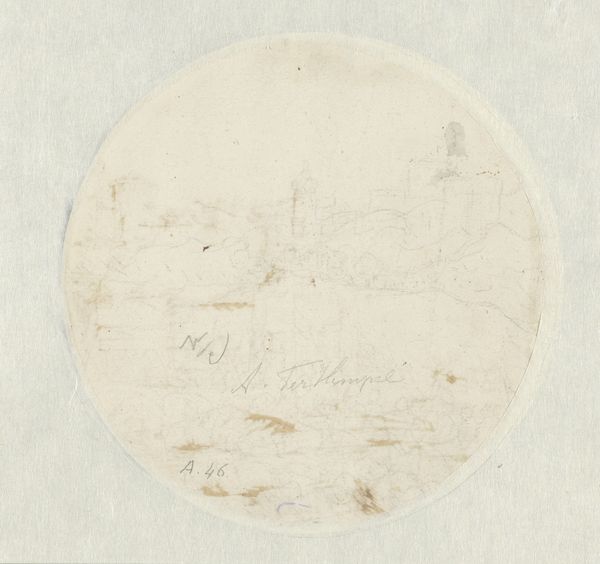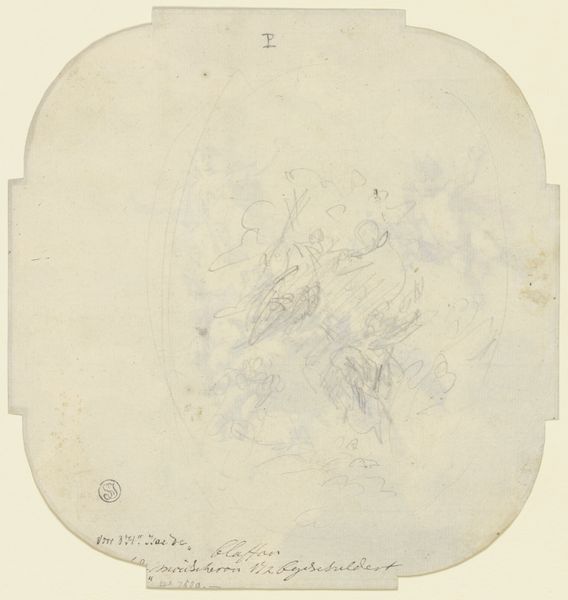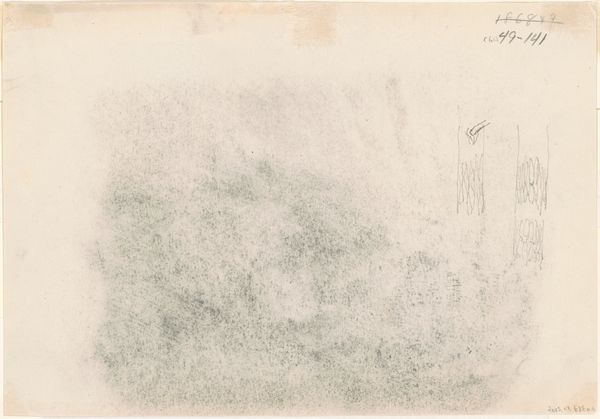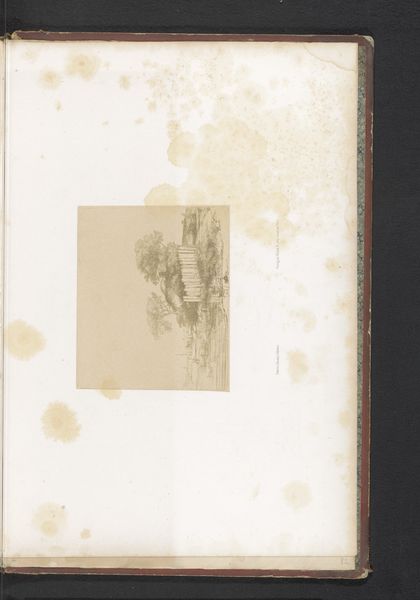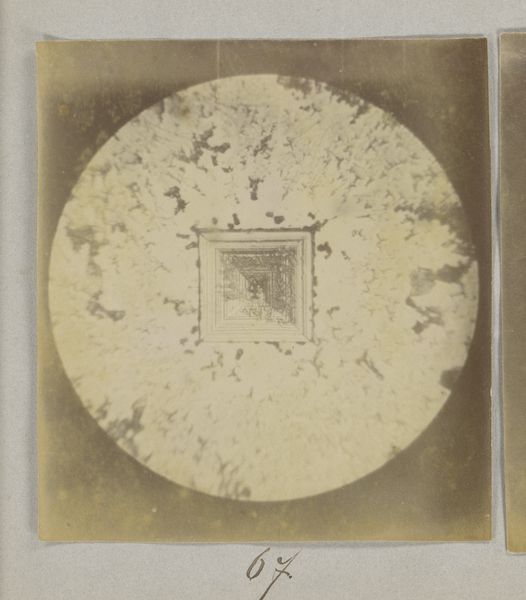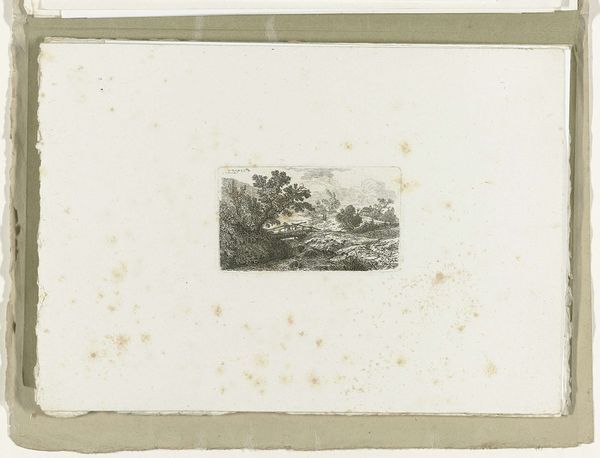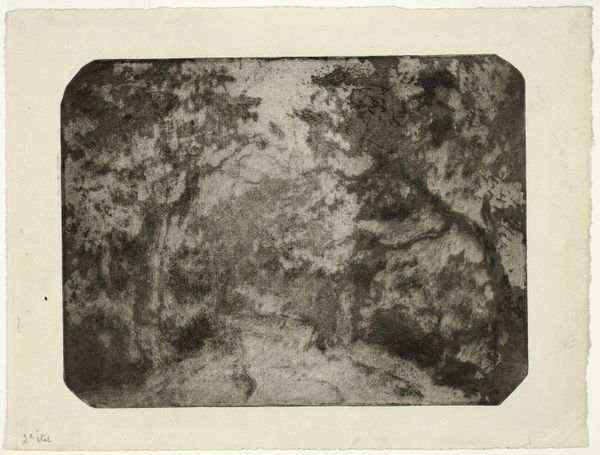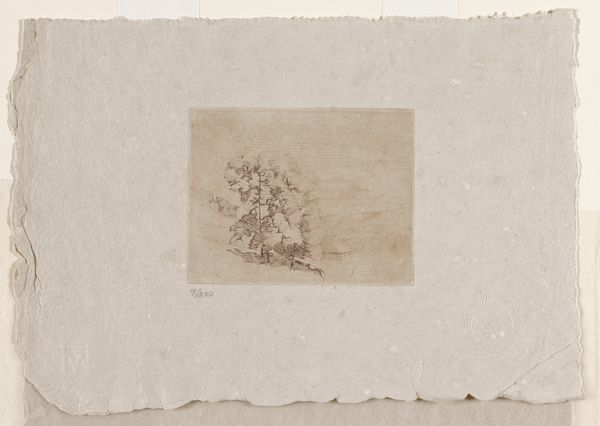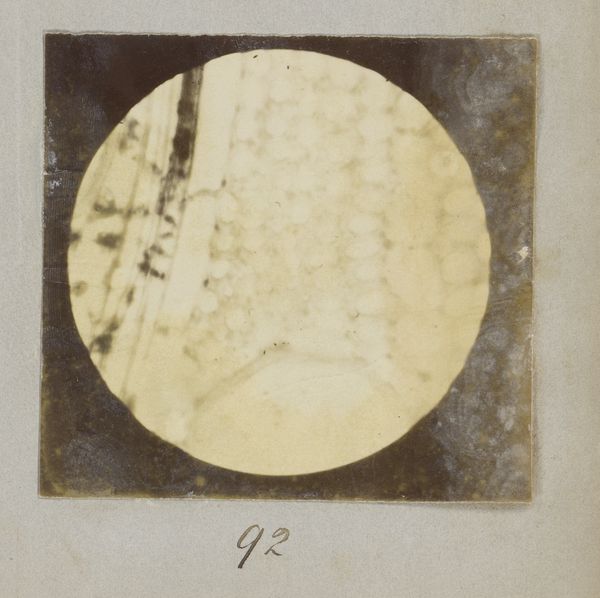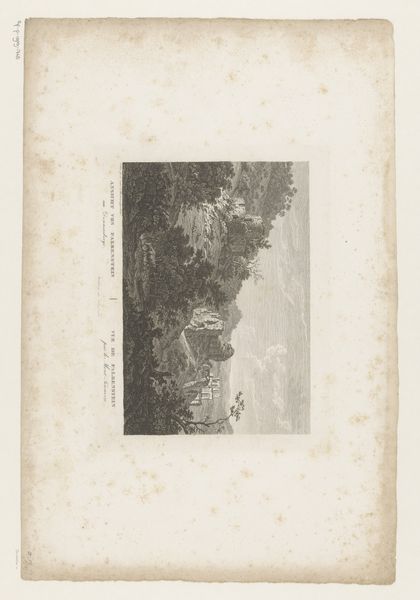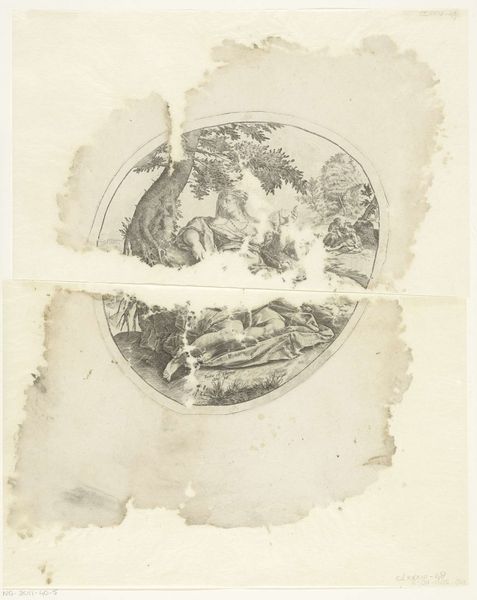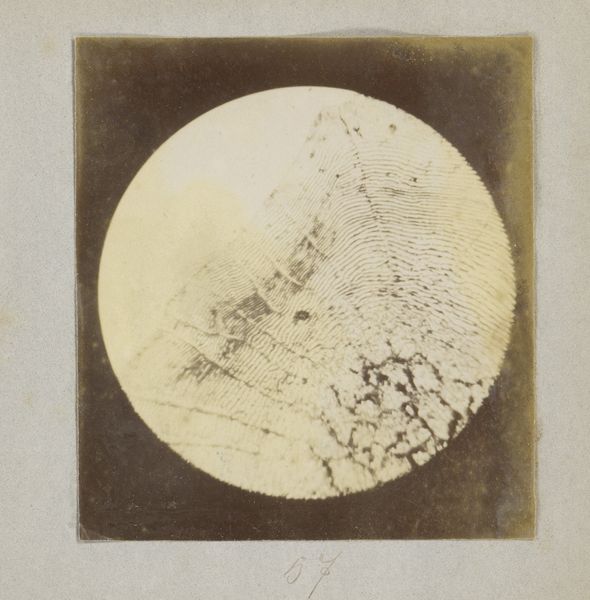
Dimensions: Image: 15.2 × 20.5 cm (6 in. × 8 1/16 in.), oval
Copyright: Public Domain
Curator: John Dillwyn Llewelyn’s cyanotype, "Sea Pool with Shells and Seaweeds," made between 1853 and 1856. It’s an understated, captivating glimpse into a small coastal ecosystem. Editor: My immediate reaction is one of quiet contemplation. The composition, with its circular frame, feels incredibly intimate, like peering into a secret world. The limited tonal range reinforces this sense of serenity and stillness. Curator: The cyanotype process itself is crucial to understanding its appeal. This early photographic technique relies on the reaction of iron salts to light, resulting in those characteristic blue hues, now faded to sepia tones in this aged print. Llewelyn’s choice of this method speaks to an interest in both scientific innovation and artistic expression. Editor: Exactly! And it's more than a mere snapshot of nature. Note how Llewelyn has arranged the seaweed and shells to create a delicate visual balance. The shapes and textures interact harmoniously, drawing the eye around the composition. There’s a deliberate choreography within this seemingly random collection. I see a nod to the aesthetics of romanticism evident in this construction. Curator: Considering the historical context is also interesting. This image emerges from a period of increasing scientific exploration and an intense fascination with the natural world in Britain. Llewelyn, a gentleman scientist himself, used photography as a tool for documenting and classifying nature, and also used it to demonstrate mastery of the medium. This particular piece could have been exhibited to communicate the value and sophistication of the novel technologies during that time. Editor: You’re right. The piece itself reflects an ambition toward accuracy, but more than that, there is a romantic expression and aesthetic selection and emphasis of the natural environment and an urge to give that a form accessible and aesthetically pleasing for others. I find myself wanting to actually touch and explore the space of the sea pool he’s captured. Curator: And ultimately, isn't that what makes art so enduring? That ability to transport us, regardless of its scientific or historical context. Editor: Indeed. Examining Llewelyn's work reminds me of the profound beauty that can be found in even the simplest things when viewed through an artistic lens, with technical proficiency applied, as well.
Comments
No comments
Be the first to comment and join the conversation on the ultimate creative platform.
